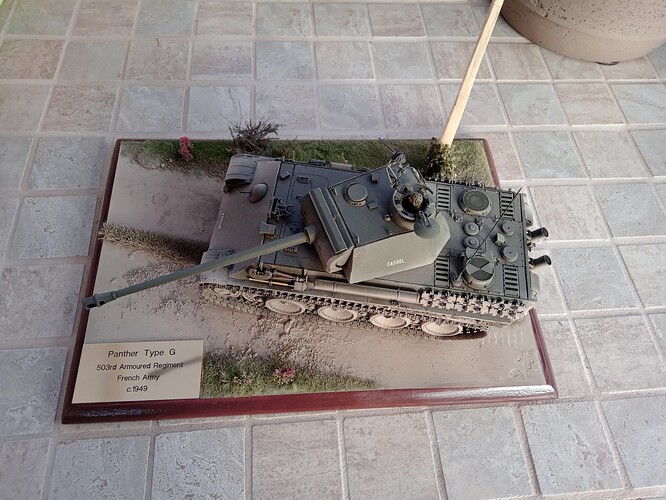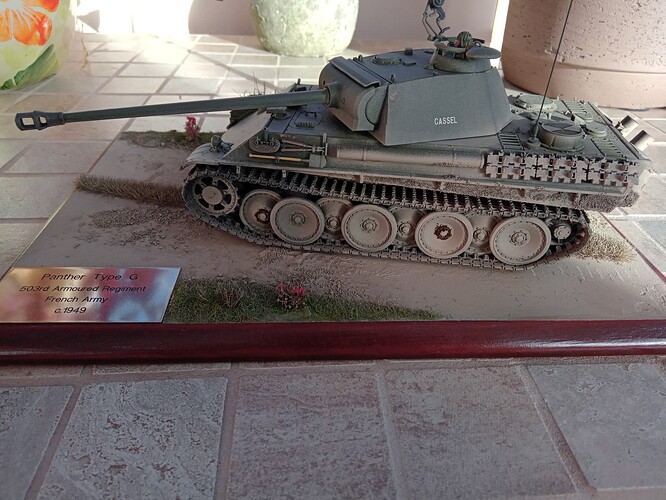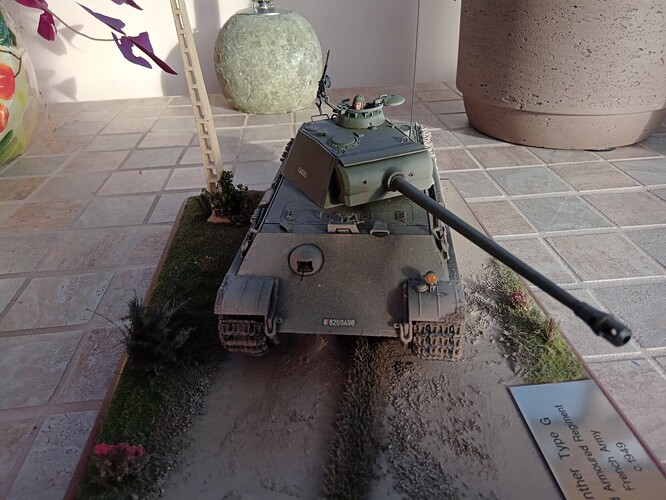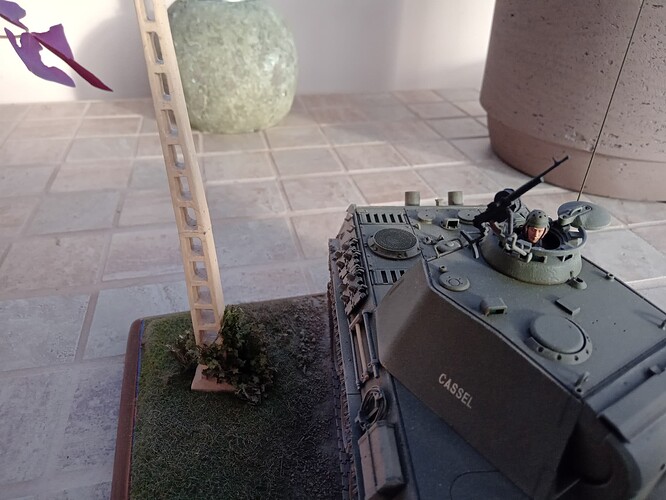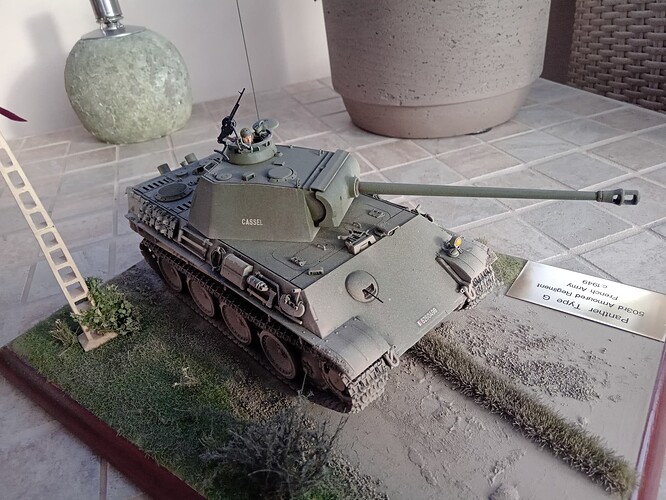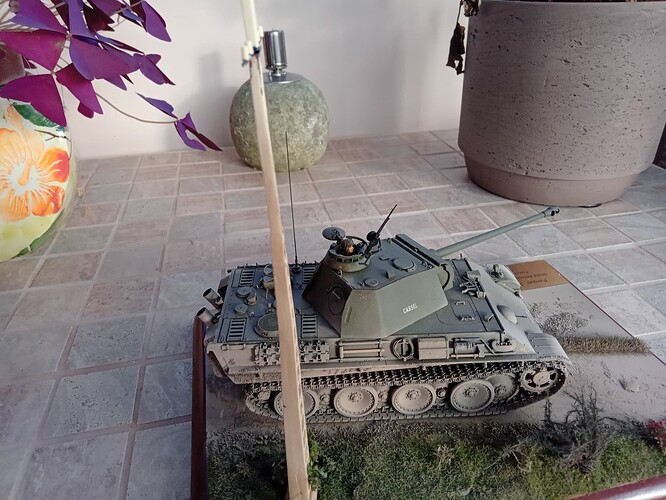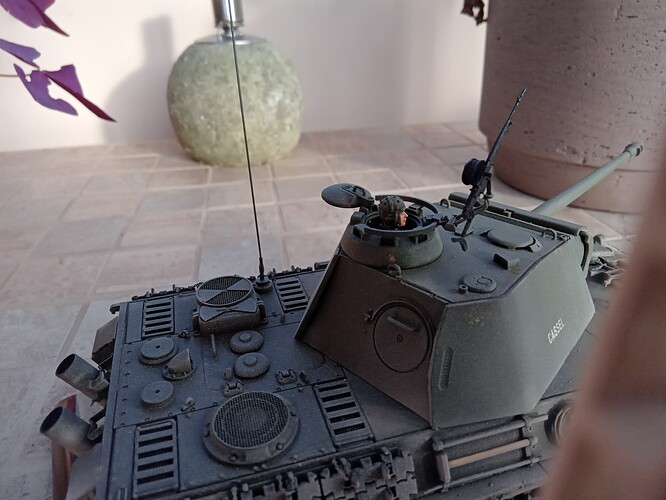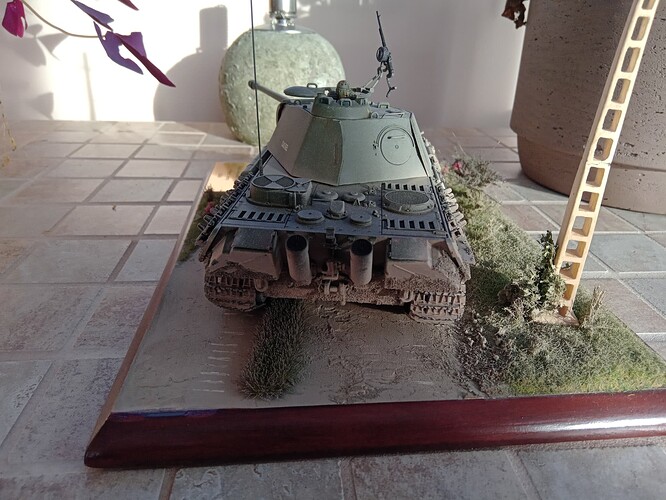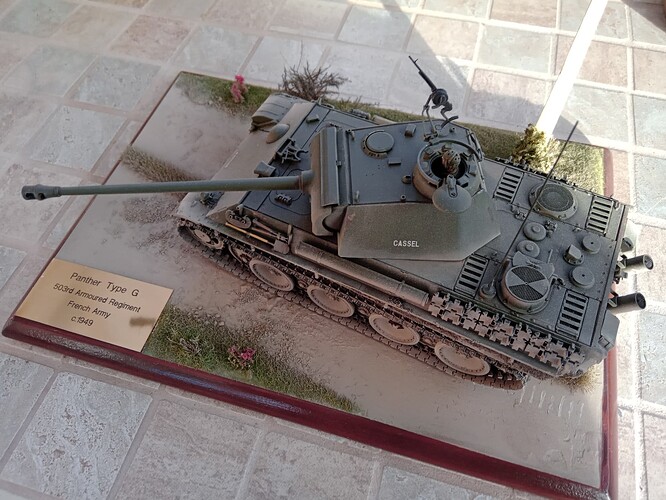To be honest this is a bit of a smokescreen while I play catch-up with a couple of other projects. I recently ordered the Osprey book on “Foreign Panthers“ and that reminded me that I’d tackled such a build back in 2018.
I didn’t have that much to go on back then, and I’ve yet to read the Osprey book in full, but some might be interested in my rendition.
It’s the Tamiya kit of the Ausf G; I’m not actually sure if the French ever managed to find a G in relatively good condition – most of the images on the excellent site “Chars Français” – show most in Zimmerit and rather tatty at that. I’m no Panther expert either and realise I may have those complicated fan covers wrong. I surmised that a Commander’s MG would still be a necessity for any self-respecting tank force and thought that the French may, just may have modified the German mount to take a French weapon – in this case a Reibel 7.5mm (as seen on post war armoured cars). I further thought that in the interests of ammo commonality they might have modified the glacis MG position to take the same gun. Whether or not that’s technically feasible I don’t know, but nothing a well-equipped military workshop couldn’t get around I would have thought.
Markings included a French Army registration plate but I believe that this application is unlikely; as I say, I’ve yet to read the Osprey book covering this aspect. I believe the commune title “Cassel” is appropriate although I don’t know if there was ever a Panther thus named.
I thought that US radios might be fitted, which led me to utilising a Commander figure with an American tank helmet – as well as the antenna on the rear deck.
The whole depicted out for a “road run” or exercise, in the Mourmelon-Suippes area in 1949:
Right, now back to those other projects.
11 Likes
Excellent! Great subject, not often seen. I seem to recall a Star Decals sheet for a French Panther. Great work.
Very sweet! Well modeled!
Amazing how a familiar vehicle looks so different in a new color.
Thanks Guys; it does indeed look different in its coat of French green paint. I haven’t checked the Star sheet just yet, but vaguely recall that it contained markings for a tank purportedly deployed in Indochina.
1 Like
Here’s an interesting Axis History Forum thread on Panthers in French Service
Ironically, one French unit with Panther’s ended up with almost twice the time operating Panthers any German unit.
1 Like
Thanks Wade; I remember stumbling across this when I was beginning my research several years back. In the end I decided to go with what I had, which wasn’t very much at all, but I so wanted to get a Panther on the display tables, otherwise I knew it would never see the light of day.
I’m still reading the Osprey book; I’ve just scanned a fair bit but it appears that although they had their hands on around 40 panthers, only around 17 were operational at the end of the decade. Earlier, when the French Army were considering the use of the tank, they found that the US refused to allow any of their captured ones to be passed to them. Extensive cannibalisation ensued and overhauls courtesy of AMX. What I hadn’t appreciated was that the Panthers operated alongside the ARL 44, which must have presented an interesting sight! (and of course is possible in 1:35 with the Amusing Hobby kit).
2 Likes
There were soo many abandoned Panthers in the French countryside that they were able to get enough tanks for 2 regiments they were operational from 1946 to 1947
Well, not really Nick; having now read the Osprey book - or at least the French piece - that appears not to be the case. Due to the refusal of the US forces to release the ones they had (apparently a considerable number) the French were reduced to scouring the countryside for wrecks to salvage a half decent supply of spares. As I’ve indicated above, by the end of the decade they only had around 17 up and running (from the 40-odd they’d procured). By 1952 this had reduced to 10. By then the Panther was at the end of its mechanical life in any case. That was also the year that the US began to supply M26s and M47s.
There appear to have been insufficient Panthers available for one regiment let alone two.
The Osprey book does appear to be well researched and I would recommend it for those interested in Panther foreign useage; it is relatively inexpensive. All inspirational stuff for modellers in any case.
1 Like
